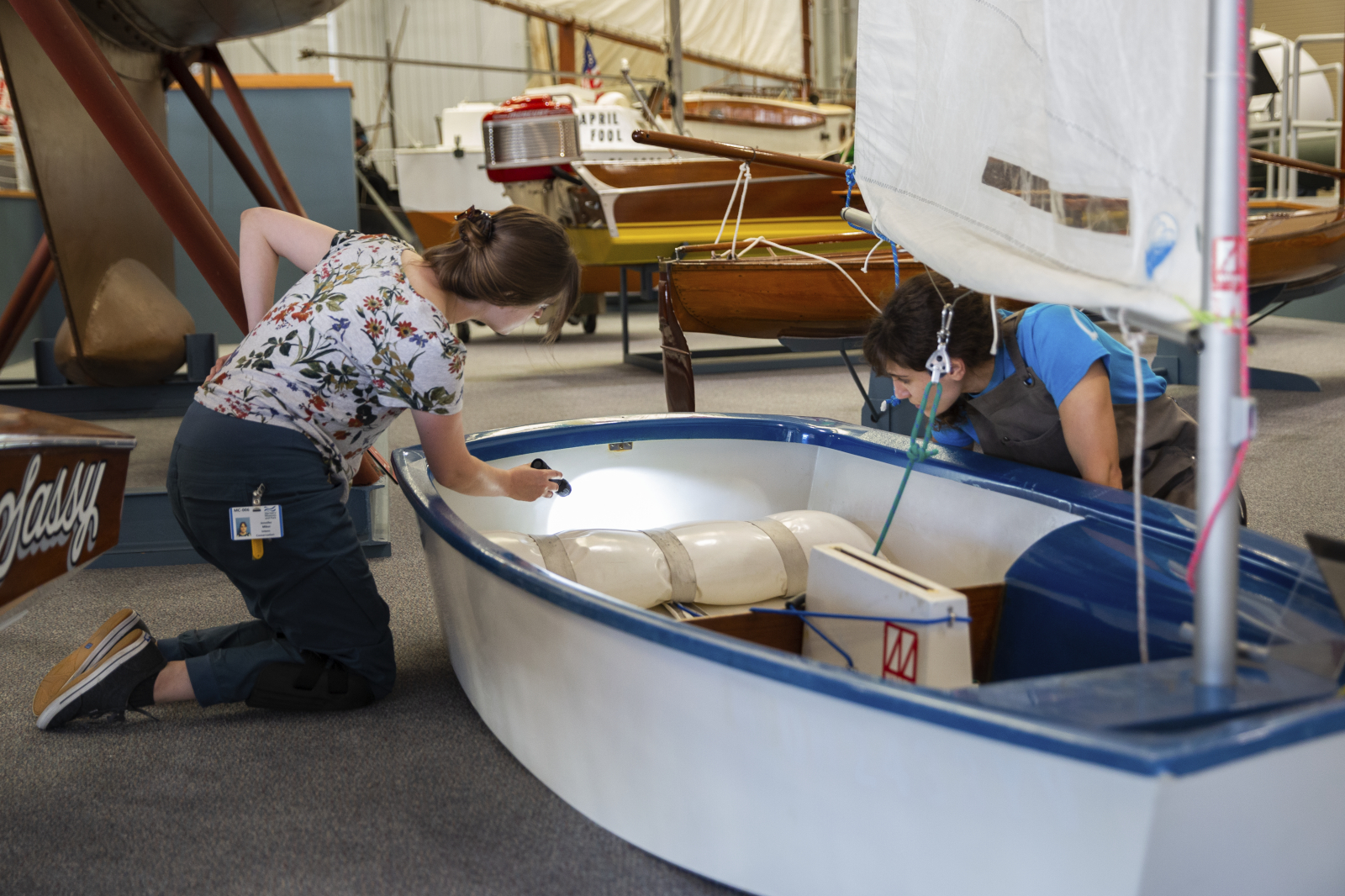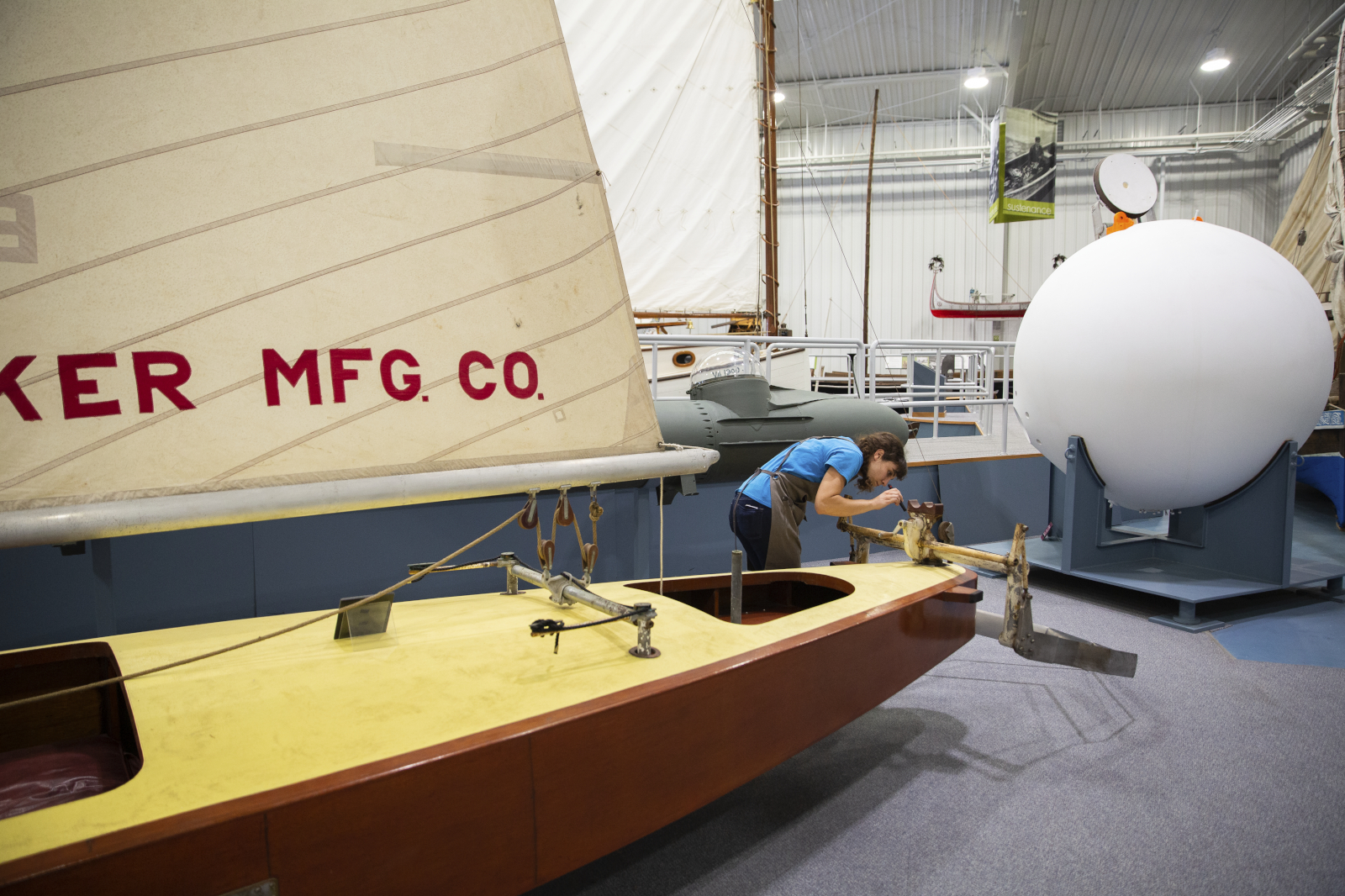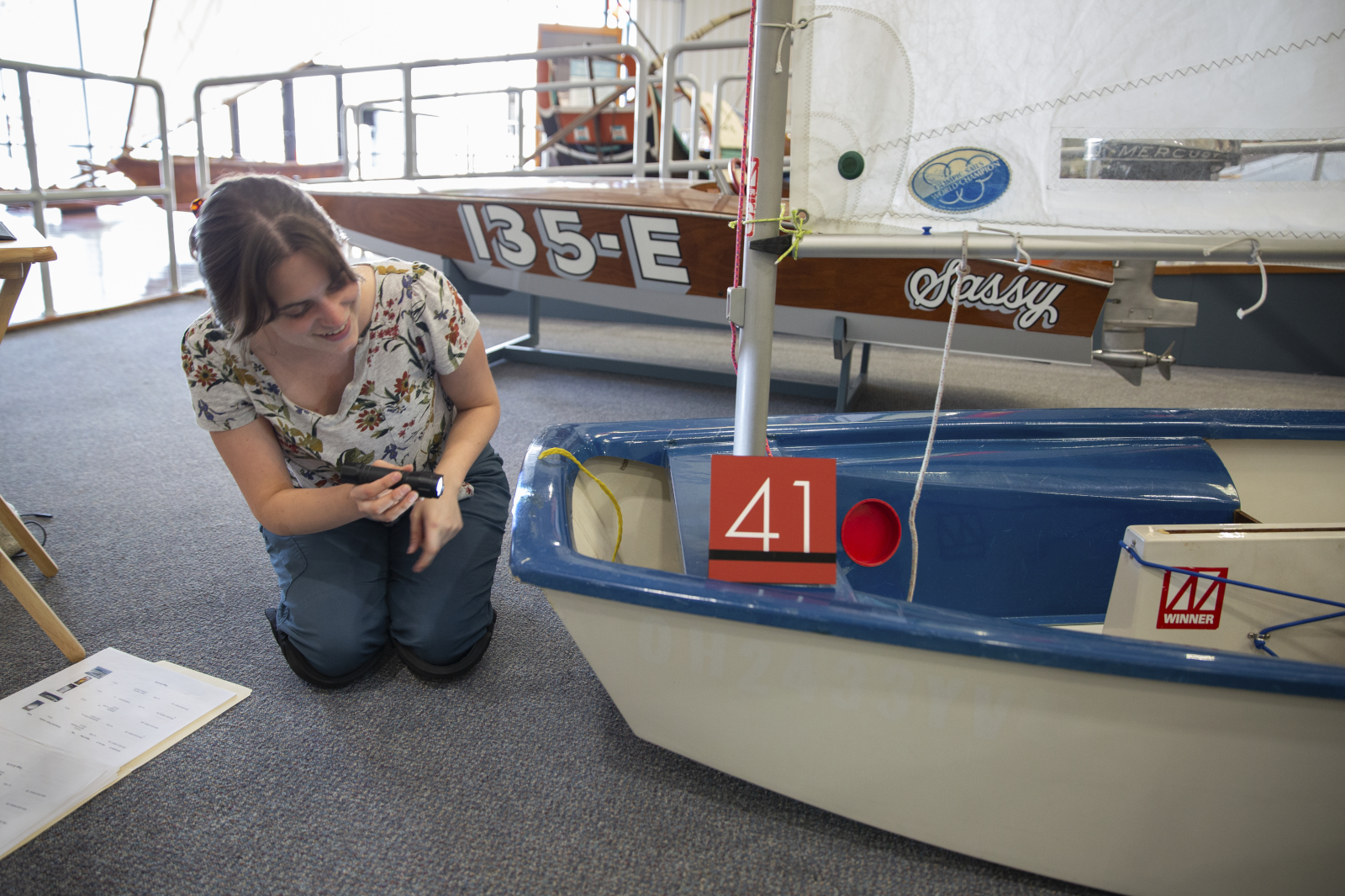
If you visit the International Small Craft Center on Thursdays, you may spot Objects Conservator Paige Schmidt and me (Summer Conservation Intern) crawling around on the floor between the boats. We have not lost our glasses like a blinded Velma Dinkley. Actually, we’re conducting a conservation survey of the Museum’s collection of 142 small craft.
The small craft collection contains a diverse variety of vessels ranging in size, shape, function, and source culture. Because the Museum’s small craft originate from such a variety of contexts, each boat comes to the Museum with its own quirks and challenges resulting from its history of use. To get a better understanding of the collection, its condition issues, and its needs, it is necessary to evaluate each small craft, one-by-one.
Much like a doctor sitting down with a patient, we start by assessing (or often hypothesizing) the boat’s treatment history (for an in-depth discussion of a boat’s history, see this post about the La Isabel Project). It is very common (especially in old collections) to find previous repair work, which has failed with time and with fluctuations in environmental conditions. By identifying previous repairs, it is easier to understand the materials that were used on an object and what types of condition “symptoms” they may be prone to develop over time.

One of my favorite examples demonstrates the importance of understanding the treatment history of a Museum object. While assisting in the small craft survey, I encountered a boat with flaking paint across its hull. On closer inspection, the flaking paint was interspersed with areas of an oily substance. It appeared that the substance was oozing out of the wood substrate of the hull and encouraging the flaking of the overlying paint layers. After reading the previous treatment records of numerous small crafts, an interesting pattern of treatments emerged. In early restoration campaigns, and in the repair and maintenance of functional vessels, it was common practice to resurface the hull of a vessel in response to flaking paint or similar surface condition issues. The hull would be sanded to remove the previous paint layer. To prevent infiltration by mold or rot, it was common for the bare wood to be treated with wood preservatives (such as “Cuprinol,” which was mentioned in several object records). Then, the surface of the hull would be primed and repainted. While it may be a perfectly logical and necessary procedure to resurface the hull of a functional vessel in this manner, unfortunately, over time, these steps may now manifest as a condition issue to the boat in its present role as a museum object. Based on an observed correlation between the presence of wood preservatives in previous treatments and the occurrence of flaking and exudation observed in the small craft collection, it is likely that wood preservatives are to blame for the issue.
Looking forward, the exuding substance will be analyzed to confirm its identity. Whether or not a wood preservative is responsible for the flaking hull paint, it is clear that a number of objects are afflicted with similar symptoms. Identification of the observed substance could provide crucial information about what is actually happening to the boats. Through surveying the small crafts collection, we will better understand how many objects are affected and to what extent. This will allow conservators to develop an informed treatment strategy to address the issue, prioritizing the most severe cases first.
As an intern, this project has been a fantastic way to learn about the materials employed in boat building and maintenance. It has allowed me to compare a wide range of boat forms and learn about the varieties of structural components necessary for a vessel to function. We find interesting new things about the Museum’s boats each day. If you see us in the International Small Craft Center, feel free to ask us what we’re looking at!

